■ Guide
Exhibition Guide
⦁ Visitors bringing a dog
- Days permitted to enter: Tuesday, Wednesday, Thursday, Friday, Saturday
- Days restricted to enter: Sunday
⦁ Visitors not bringing a dog
- Permitted to enter on all days (except for days when the museum is closed)
Reservation Guide
⦁ Visitors bringing a dog
- Online reservation
Reservation on the exhibition page of A Museum for All, a Museum for Dogs
* Please refer to the website on the time slots and the number of visitors/dogs admitted per time slot
⦁ Visitors not bringing a dog
- Online reservation
Reservation using the link of Advance Bookings under social distancing measures
Reservation Guide for Screening and Performance Programs
⦁ Admission Policy
- Admission of dogs depend on each artwork (Please refer to the detailed policies on the MMCA website)
⦁ Reservation
- Online reservation
Reservation using the Performance·Screening Reservation link on the webpage of A Museum for All, a Museum for Dogs
A Museum for All, a Museum for Dogs is a program that invites dogs to visit the Museum with their human companions. For the smooth operation of the program, we kindly ask for your respect and tolerance of others. If you are bringing a dog, you are only allowed to enter the following spaces during the exhibition period: Gallery 7, Gallery Madang, and Museum Madang.
The exhibition A Museum for All, a Museum for Dogs has opened up the MMCA for companion animals that are sometimes referred to as "family members," but are often restricted to enter public spaces. By inviting dogs to an art museum-a highly anthropocentric space and one of the most symbolic of all public spaces-we hope to rethink the meaning of companionship in contemporary society, our attitude towards the Other, the scope of tolerance allowed in a museum, and the idea of public spaces.
For many years, the National Museum of Modern and Contemporary Art Korea has worked hard to enhance the accessibility of the museum under the slogan of "A Museum for All." In the spirit of this mission, A Museum for All, a Museum for Dogs questions who we consider to be included in this word "all." For about a month, parts of the museum will transform into spaces where dogs and dog lovers can coexist. The project will experiment to see whether companion animals can remain as members of the family and society in public spces, and whether the museum, as an anthropocentric construction, can embrace the Other and non-human entities.
The project will consist of exhibitions, performances, screenings, and talks that deliberate on the meaning of companionship and relationships, the perception ability of other species, and the paradox of the concept of “nature-culture.” In the process of preparing for this, we not only concentrated on the artistic program, but also took into account other aspects surrounding the museum, such as the museum's architecture, management, and merchandise. Thus, experts from various fields have joined the team: two veterinarians, Seol Chae-hyeon and Cho Gwang-min, offered advice on the perception, cognition, habits, and emotions of dogs. Architect Kim Geong-jae and landscape architect Yoo Seung-jongdesigned the architecture and the landscape for dogs, while the screening program was curated by curator Kim Eun-hee.
Above all, we thought of contemporary art practices that can minimize damage to the environment and tried to construct an exhibition in a different way than the preexisting norms. In small steps, the MMCA hopes to contribute to expanding the "significant otherness," by taking the environment, the Other, and our surroundings in a more thoughtful way.
Welcome to all our dog companions, human companions, and other visitors: woof woof!!
Art Works
Exhibition
Kim Kyung Jae The Near Future, User's Guide for Someone Else's living Space
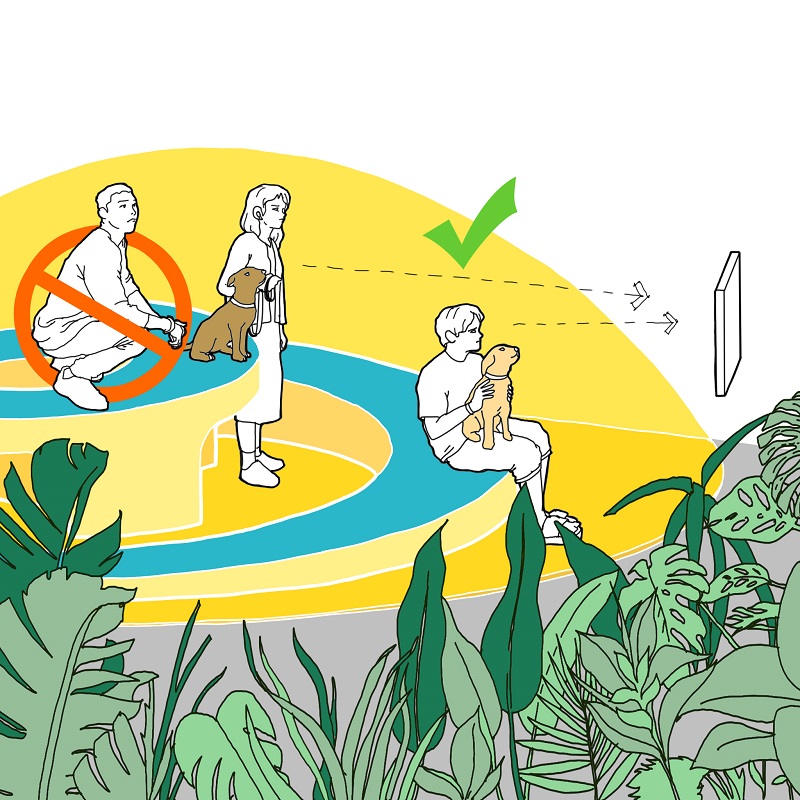
2020, mixed media, dimensions variable.
Spaces are like a diagram that represents a relationship; certain ideals of relationships manifest themselves as certain forms of spaces. The diverse relationships between humans and animals are expressed in many spatial forms. In contrast to the previous relationship between humans and dogs–a relationship between the host and the guard, of the protector and the protected, or a unilateral relationship between the owner and the pet–new kinds of relationships are appearing and are accordingly reflected as reinterpreted living rooms. The exhibition space will turn into these living rooms filled with both wild and tamed nature.
Kim Sejin Messenger(s)
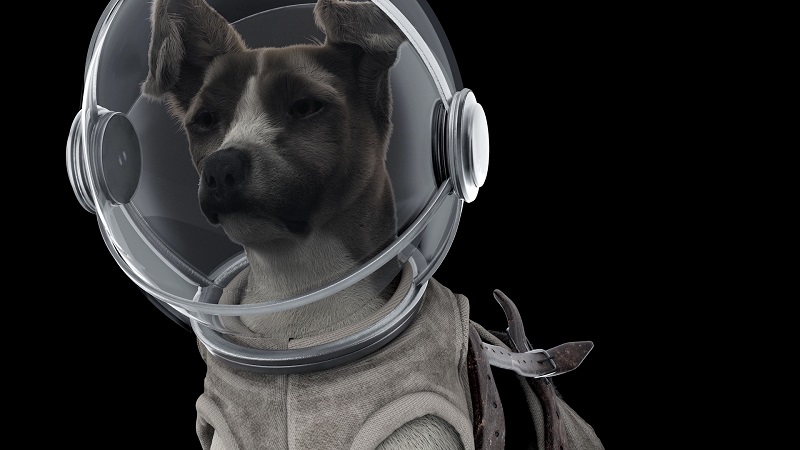
2019, single channel 3D motion graphic video, 52 sec., loop.
Surprising to many, the first country to launch a satellite, Sputnik 1, into outer space on October 4, 1957 was the Soviet Union. As a reaction to this “Sputnik Shock,” the United States established NASA the next year. Later, the Soviet Union launched Sputnik 2, carrying with it a stray dog named “Kudryavka,” which was found in the slums of Moscow. Renamed as “Laika,” this dog became the first living creature to experience a space flight. Following this first excursion, a cat named Félicette from France and a chimpanzee named Ham from the United States were the next living creatures to step into the outer space. Only brief accounts of these dogs remain, reminding us of human arrogance and ignorance about other species, as well as colonial desires that stretch out to the universe. Using 3D motion graphic video made of hyperrealistic and yet fictional images,
Messenger(s) visualizes “Laika,” who eventually disappeared into outer space. The work is an interpellation of the names of specie(s) erased in the human history of never-ending progress.
Demelza Kooij The Breeder
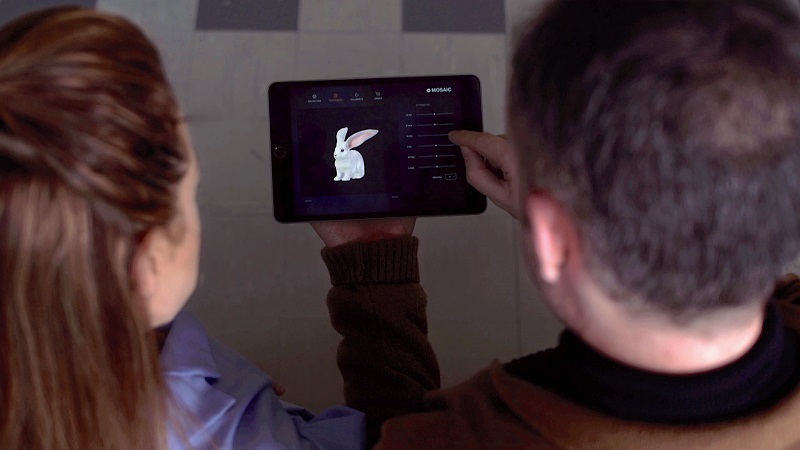
2017, single channel video, color, sound, 11min. 57sec.
The Breeder is a hybrid short film that tells the story of a scientist turned breeder who uses genetic modification to design custom-made pets. Dr. Schönbacher's new app makes it easy for you to design and order the pet you desire. These hyper-cute creatures melt hearts worldwide, but there is a dark side to their irresistible begging eyes. Through a meticulously edited film, Demelza Kooij critically views the extremes of anthropocentrism and consumerism.
David Shrigley Hello There
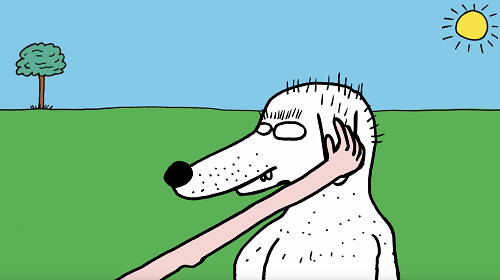
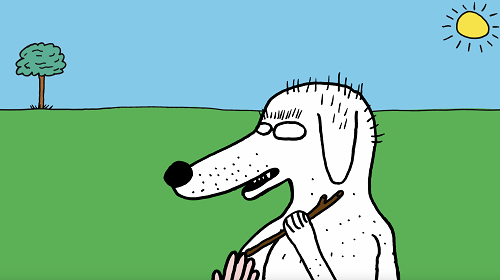
2013, single channel video, animation, color, sound, 3min. 20sec. Courtesy of Stephen Friedman Gallery, London.
Hello There is a playful, humorous animation by David Shrigley, created to coincide with the release of the British artists's book How are you feeling? in 2012. In this short film, we are introduced to Mr. Dog and an unnamed character off screen who ask each other questions and engage in a game of fetch. The result is an amusing encounter exploring creature identity and personal boundaries.
Ellie Kyungran Heo I Say
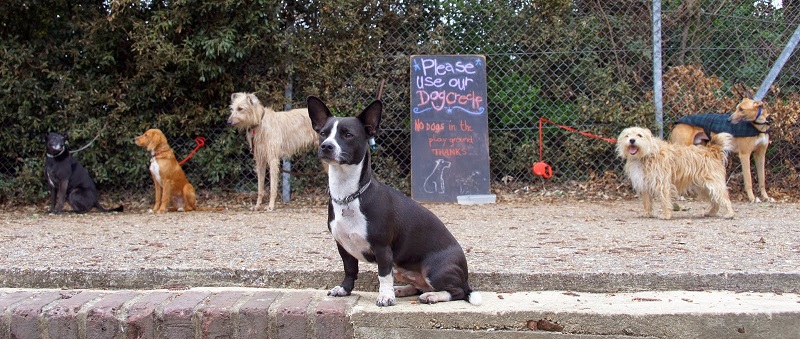
2012, HD video, color, sound, 2min. 54 sec.
Every Saturday, a farmer's market opens on the grounds of Hampstead Parochial School in London. The vendors have politely asked local residents to refrain from entering with a dog by putting up a signboard saying "No dogs in the playground." In most cases, the human companions willingly leave their dogs where the signboard stands-where the dogs have a full view of the market-to wait while their human companions buy food. Although I Say simply captures this mundane scene, questions arise about the subtle, complex and diverse meanings hiding behind the notions of "companionship," "divisions of territory," "the innocence of dogs that transcend boundaries," and "generosity."
Smooth Yoo The Forest for All
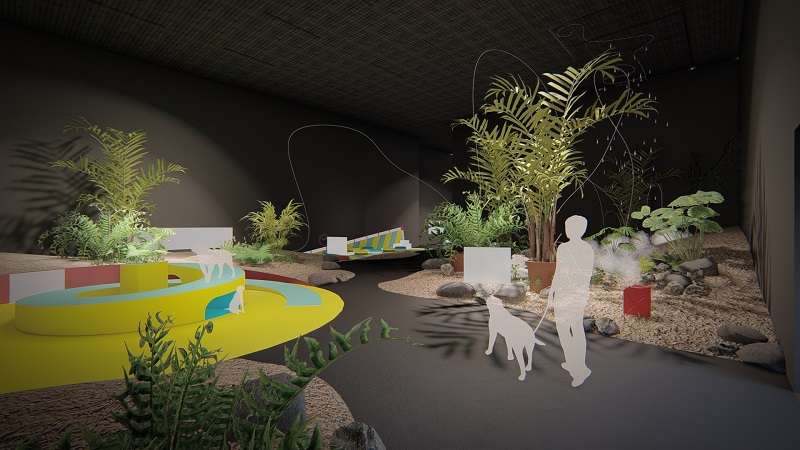
2020, mixed media, dimensions variable.
When plants (and animals) arrive at the museum, they raise complicated questions. Through the word "forest", landscape architect Smooth Yoo directs us to the ambivalence of "natureculture" something that can never be completely humanized or remain as intact nature. The work tells of a "forest" different from the picturesque one suitable for meditation, the completely humanized park, or the idealized Arcadia. The "forest" here is a space of hybridity and multiplicity, a mixture of signs and substance, a place that is never graspable as a whole.
Jung Yeondoo Togo and Balto - A Group Sculpture of a Canine Hero Who Saved Humanity
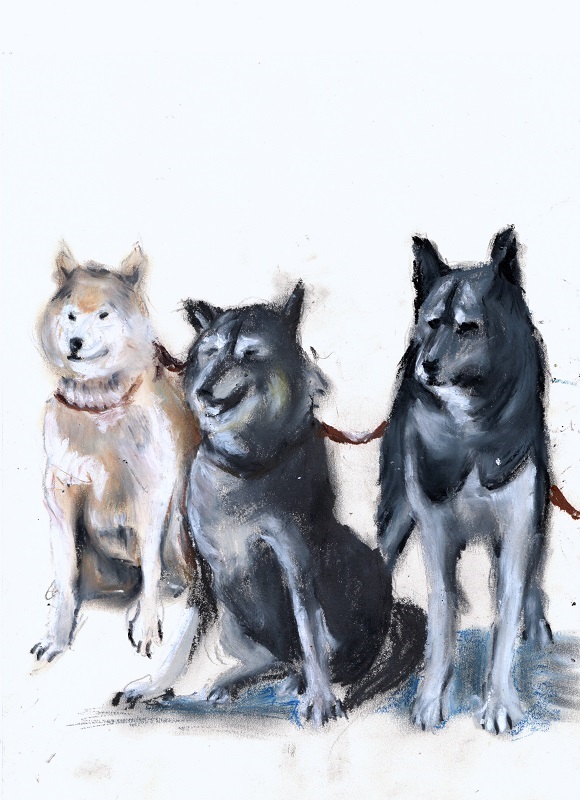
2020, dog food, mixed media, 99x156x133cm.
Togo and Balto are sled dogs that pulled a sled day and night with the mission of delivering the immune serum needed to save children from a fatal plague in the midst of extreme cold in Alaska in 1925. This work recreates the bodies of two heroic dogs that saved people. The sculpture will be made of dog food, with the hope of drawing sympathy from the dog visitors. The paradoxical juxtaposition of two facts-the plague having originated from animals, and then animals saving humans, creates the irony in this work. By constructing a statue with dog food that contains different processed meat, the work will portray the fierce combat against invisible viruses and germs throughout history. It will also invite the audience to think about the coexistence of humans and animals.
Performance
Kim Jungsun x Kim Jaelee Body Landscape
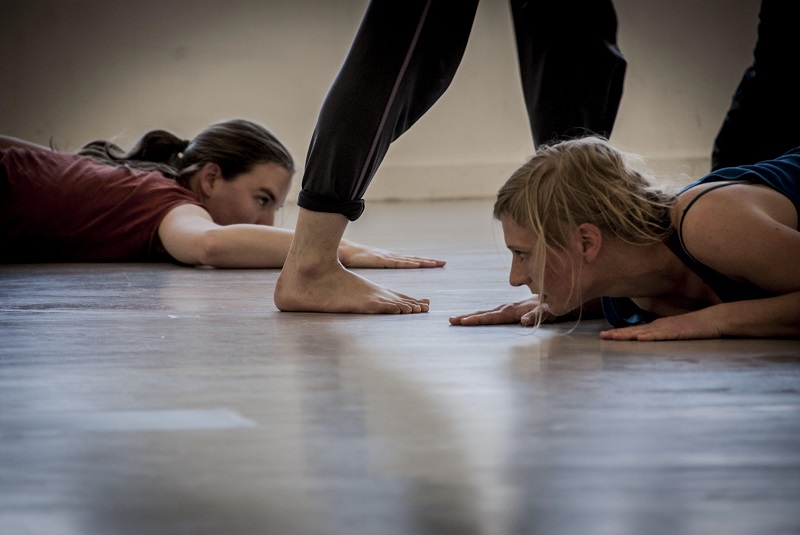
2020, performance, 180min. Photo: ©Roger Rossell.
Body Landscape excludes fixed rules or structures and focuses on dance that reveals itself immediately and lets one sense the invisible. The work examines all elements that form the body. The notion of the "mechanic body" as proposed by Body Landscape refers to the attempt of recognizing every element of the body, such as the bones, the muscles, and the fluids, thereby allowing one to "become" something else beyond the anthropocentric state.
A workshop will take place next to Body Landscape, exploring the expansion of perspectives through the process of perceiving one's body. The workshop is an approach to escape from our social and visually-oriented bodies to restore the ground-oriented, primordial state. Through the workshop, participants will experience the sense of transforming their perpendicular bodies into horizontality; their attention on themselves will be extended to the surrounding landscape.
Nam Hwayeon Curious Child
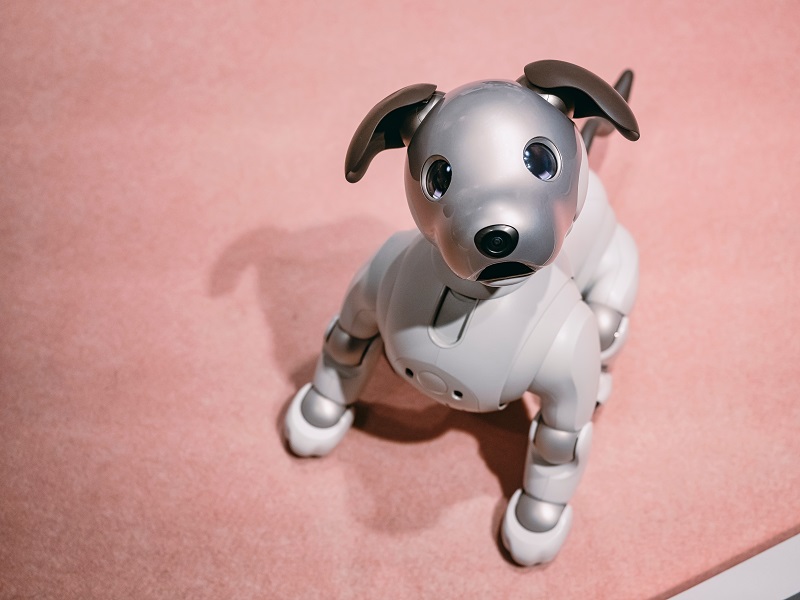
2020, performance, 15min. Photo: ©VTT Studio/Shutterstock.com
Aibo is a dog-shaped companion robot that was first produced and sold by Sony in 1999. Even though it was a machine that was invented to replace the living dog-a creature considered to have the most intimate relationship with humans-some owners of Aibo still formed an intimate relationship with it. In Curious Child, the audience will walk the Aibo named Love-Child in the museum while listening to mixtape.
Screening
Anri Sala If and Only If
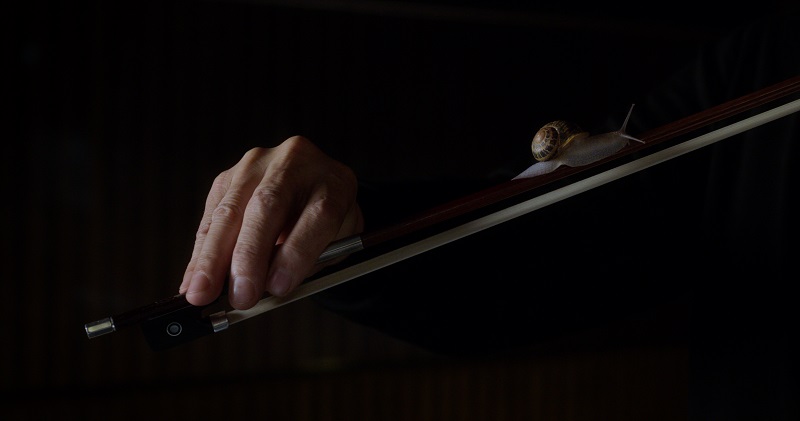
2018, single channel version video installation, HD, color, sound installation(4.0 surround), 9min. 47sec., Gallery 7 / DCP screening, MMCA Film & Video. Courtesy of Marian Goodman Gallery, Galerie Chantal Crousel.
A garden snail travels the full length of a viola bow, gradually moving across it, yet disrupting the delicate balance on which the maestro's playing relies. The snail's pace imposes itself on the performance, prompting the viola player to make adjustments for, and compose with, this evolving situation. When the snail slows down, hesitating to move forward, the violist encourages it to carry on. Stravinsky's Elegy for Solo Viola is thus subverted through the tactile interaction between the musician and the snail, its duration revised to almost double its usual time. The Elegy elongates into a journey that becomes a tangible part of its musical rearrangement.
Jean-Luc Godard Adieu au Langage
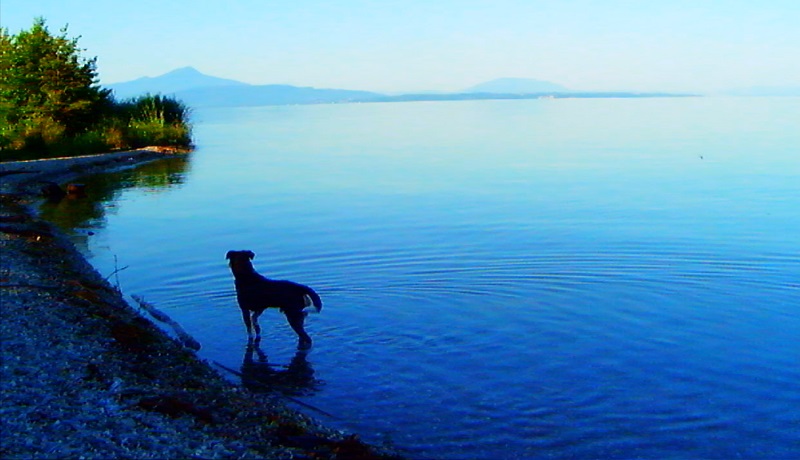
2014, 3D, color, 71min, MMCA Film & Video. Courtesy of Alain Sarde–Wild Bunch.
Adieu au Langage is Godard's 121st film and his first 3D feature shot on a low budget. The work's cinematographer, Fabrice Aragno, created his own custom camera by rigging Canon 5Ds and Flip Minos, thereby accomplishing experimental 3D imagery with minimal device. The film represents abstract landscapes of human relations that is combined with narrations of poetic quotes which condemn the absurdity of this world and human folly. A dog strays between towns observing a woman and a man who meet, love, argue and fight during a season. Through the eyes of Godard's dog Roxy, the whole event transforms into an incomprehensible world of metaphors.
